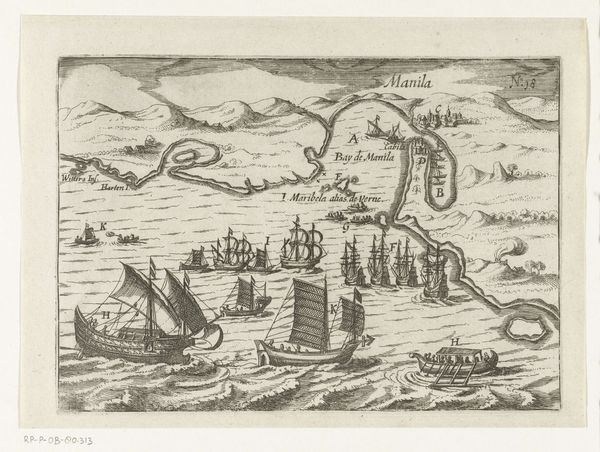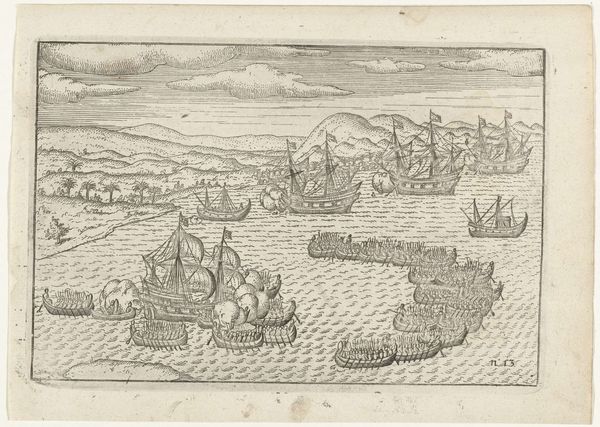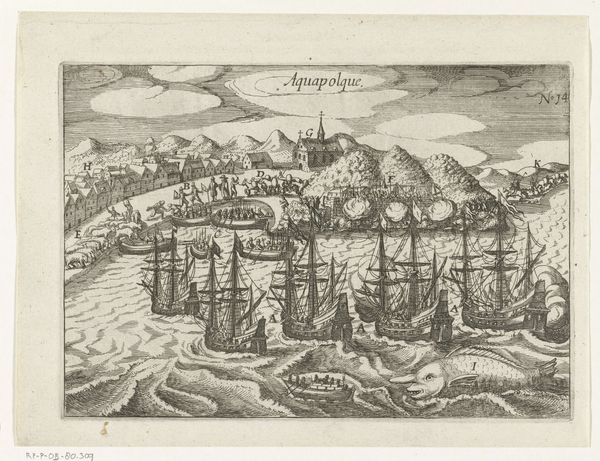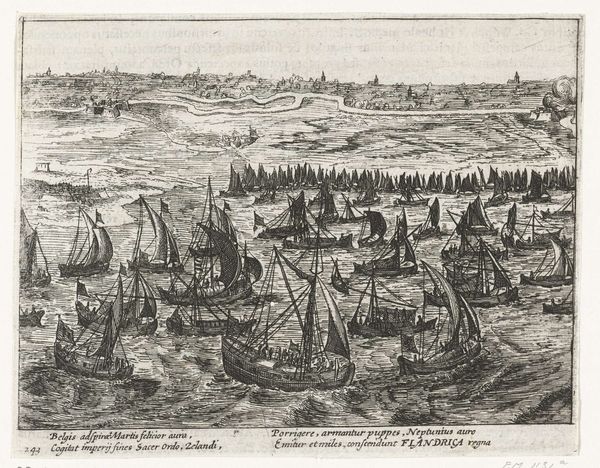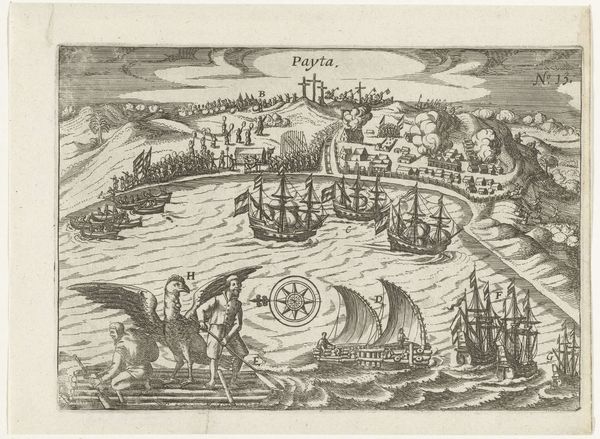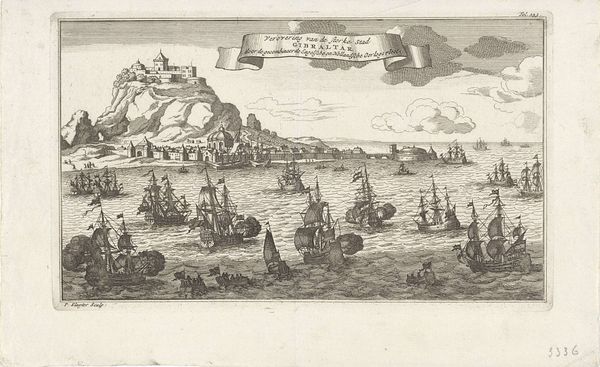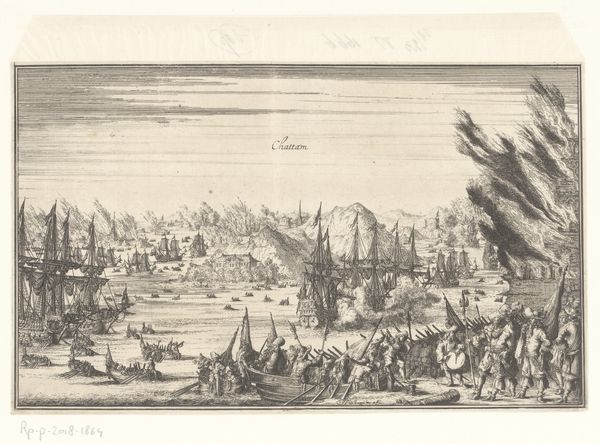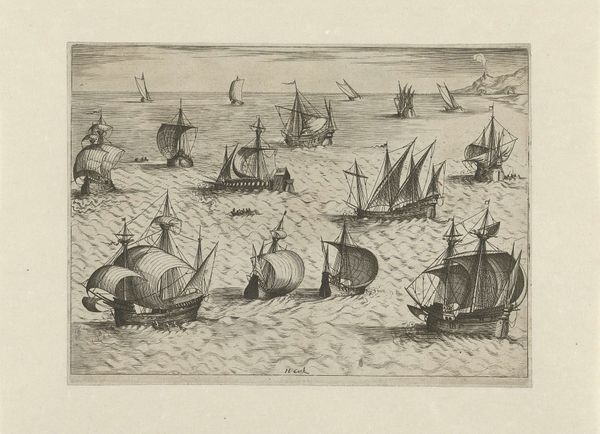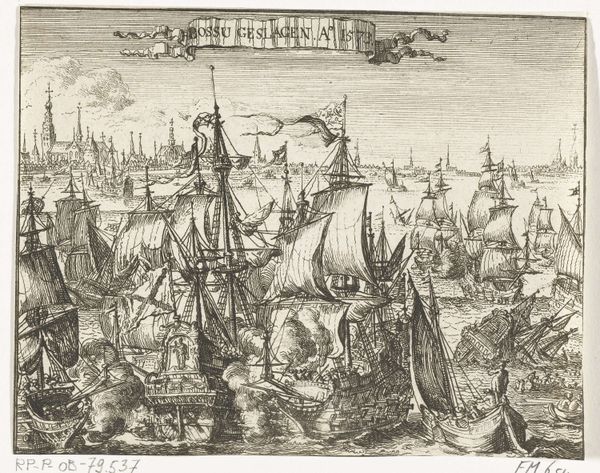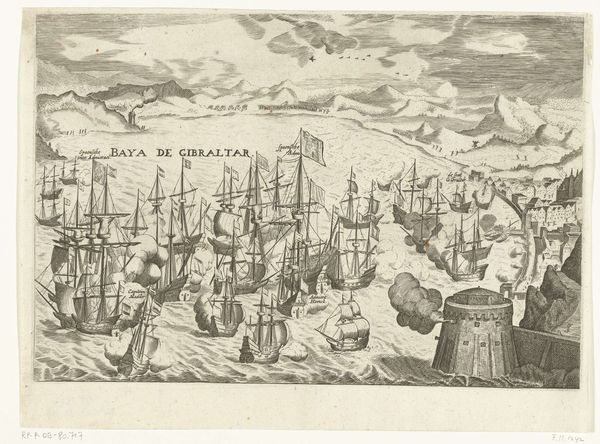
drawing, print, etching, ink, engraving
#
drawing
#
dutch-golden-age
# print
#
pen illustration
#
pen sketch
#
etching
#
old engraving style
#
landscape
#
11_renaissance
#
ink
#
orientalism
#
genre-painting
#
history-painting
#
engraving
Dimensions: height 150 mm, width 215 mm
Copyright: Rijks Museum: Open Domain
Editor: This print, "Aankomst bij de Ladrones eilanden, 1616," by an anonymous artist and dating from 1617 to 1646, depicts the arrival at the Ladrones Islands. I find the sheer number of ships and figures overwhelming! What structural elements stand out to you? Curator: Indeed. Note how the composition is rigorously organized into distinct planes. The foreground features indigenous figures, likely representing the islanders, while the middle ground is dominated by a dense collection of European ships. A receding coastline provides a sense of depth. The use of line is particularly compelling here; consider the meticulously etched details defining the texture of the sails. Observe also the recurring verticality provided by the masts of the ships. Do you notice any variation in line weight that guides your eye? Editor: Yes, I see that the foreground figures and ships closest to us have much bolder lines, making them visually prominent. Is that a device to emphasize their importance within the narrative? Curator: Precisely. But let us also consider how this strategic variation creates a system of visual hierarchy. The stronger lines assert the primacy of the figures and the nearest vessels. Meanwhile, the gradations of shading – achieved through carefully controlled cross-hatching – modulate a compelling spatial recession. How do the horizon line and the rendering of the sea contribute to the overall impression? Editor: I see how the high horizon line flattens the scene and how the waves, rendered with repetitive, almost stylized lines, add to the feeling of a vast, perhaps even unknowable, ocean. The ships almost appear stacked, enhancing that feeling of density I mentioned. Curator: Yes. What begins as reportage transforms into an experience that verges on the sublime. By paying close attention to its formal qualities, the engraving achieves significance exceeding its mere illustrative function. Editor: I hadn't thought about it that way before. So, beyond simply documenting a historical event, the artist used composition and line to convey a deeper sense of space, scale, and even power dynamics? Curator: Exactly. Appreciating this engraving comes from a rigorous decoding of its form. The careful placement and rendering of elements give a strong organizational system of lines that emphasizes the picture's cultural dimensions. Editor: That is great insight! Thanks so much. Curator: You're most welcome. A deeper appreciation awaits those willing to look closer at such art.
Comments
No comments
Be the first to comment and join the conversation on the ultimate creative platform.
